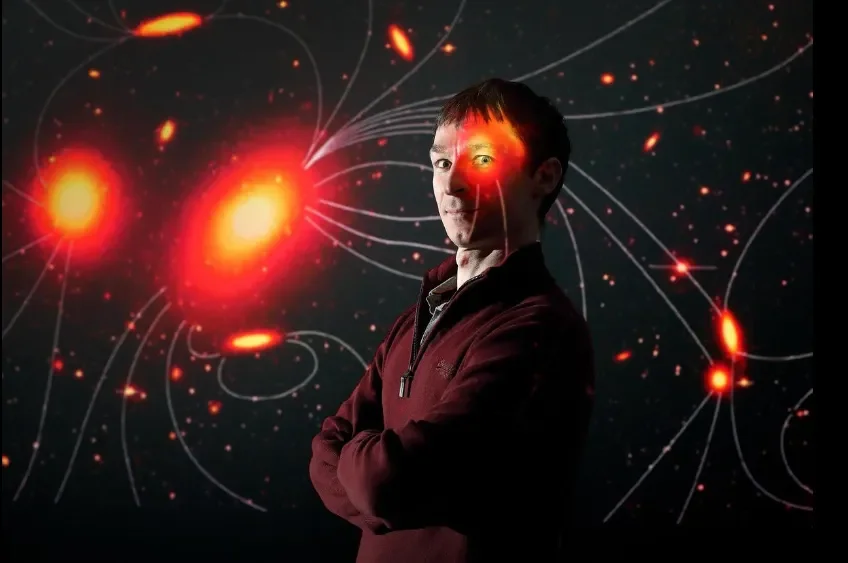

Irish astronomer brings science closer to finding origins of magnetism
Shane O’Sullivan, Assistant Professor of Astronomy at DCU has measured incredibly weak, far off intergalactic magnetic fields, with greater accuracy than ever before, according to the journal MNRAS.
Astronomers are interested in magnetism because of what it says about how the Universe was formed, and the rules governing its existence, and because it is one of the basic physical forces that dictate Universal laws.
“Magnetism is a phenomenon that exists everywhere, and we make use of on Earth for communication, navigation and for MRI scans,” says Prof O’Sullivan. “We would like to know more about how it arose.”
“Scientists want to know, for example, if cosmic magnetism originated just after the Big Bang, or much later when stars or galaxies formed,” says Prof O'Sullivan who used the I-LOFAR telescope in Birr - part of the LOFAR network of European telescopes - to make his latest findings.
The I-LOFAR telescope is flat, which enables it to gather light and radio signals from distant parts of the galaxy, while special software permits astronomers to focus on those areas of night sky of particular interest.
“Up to now, astronomers used computer simulations to try to predict the strength and origins of cosmic magnetic fields, but this is the first time they have been directly observed with such accuracy,” says Prof O’Sullivan.
The Earth is surrounded by a magnetic field, says O’Sullivan, while on Earth, the force of magnetism derives from molten rocks deep in the core. These rocks dictate where ‘true north’ and ‘true south is on a compass while every 300,000 years or so these poles are reversed.
Magnetism is invisible, but everywhere, producing repulsive or attractive forces. The challenge that astronomers like O’Sullivan face, is trying to measure magnetic fields in far off space that are about one billion times weaker than the average fridge magnet. “I-LOFAR allows us do that.”
Astronomers are probing the earliest moments – just after the Big Bang - in an effort to better understand how it began, and how stars, planets, solar systems, and galaxies came to form the visible Universe.
Discovering the origins of magnetism can help answer those questions about how the Universe began, and how stars, planets and galaxies formed. There are also down to earth reasons to study magnetism.
“Magnetic fields are crucial for much of our modern technology such as our smartphones, and communication and navigation systems,” says Dr O’Sullivan. Understanding magnetism better can improve technology.
Meanwhile, the investment made in building the I-LOFAR radio telescope and the software to measure cosmic magnetic fields could, O’Sullivan says, lead to unexpected future benefits for wider society.
“This kind of research can benefit all of us in unpredictable ways,” says O’Sullivan. “Remember, for example, that WIFI was invented by a radio astronomer who was trying to find exploding mini–Black Holes.”
This story appeared first appeared in the Irish Independent.
